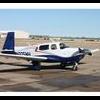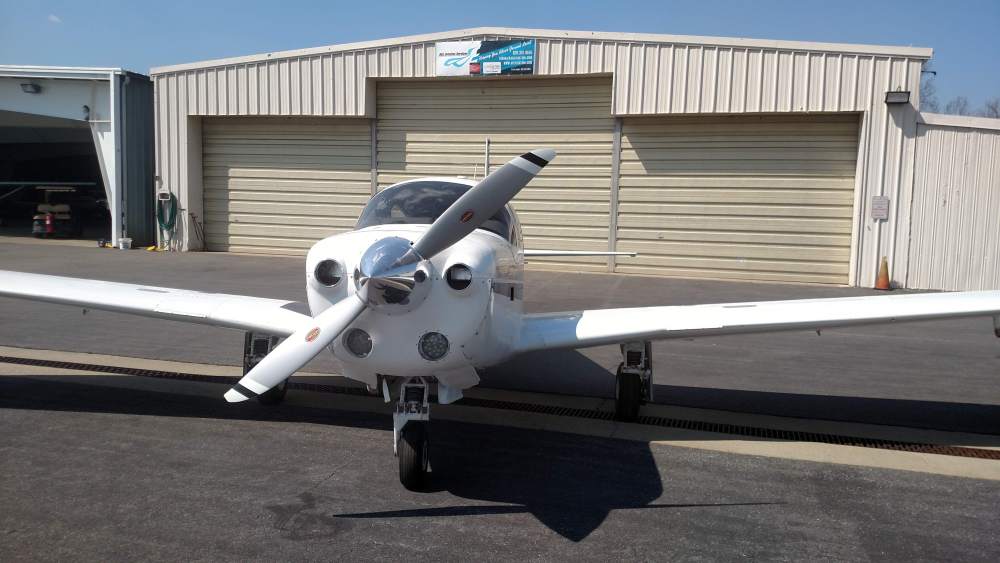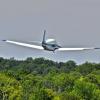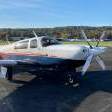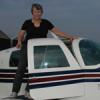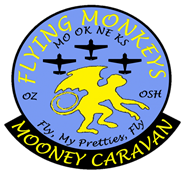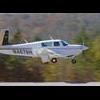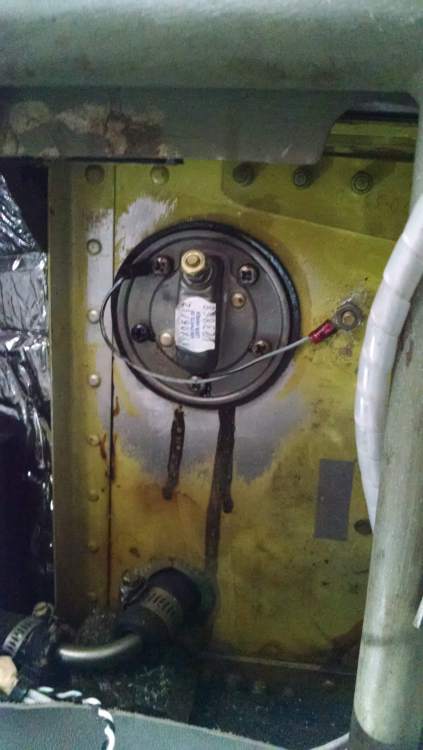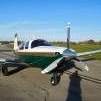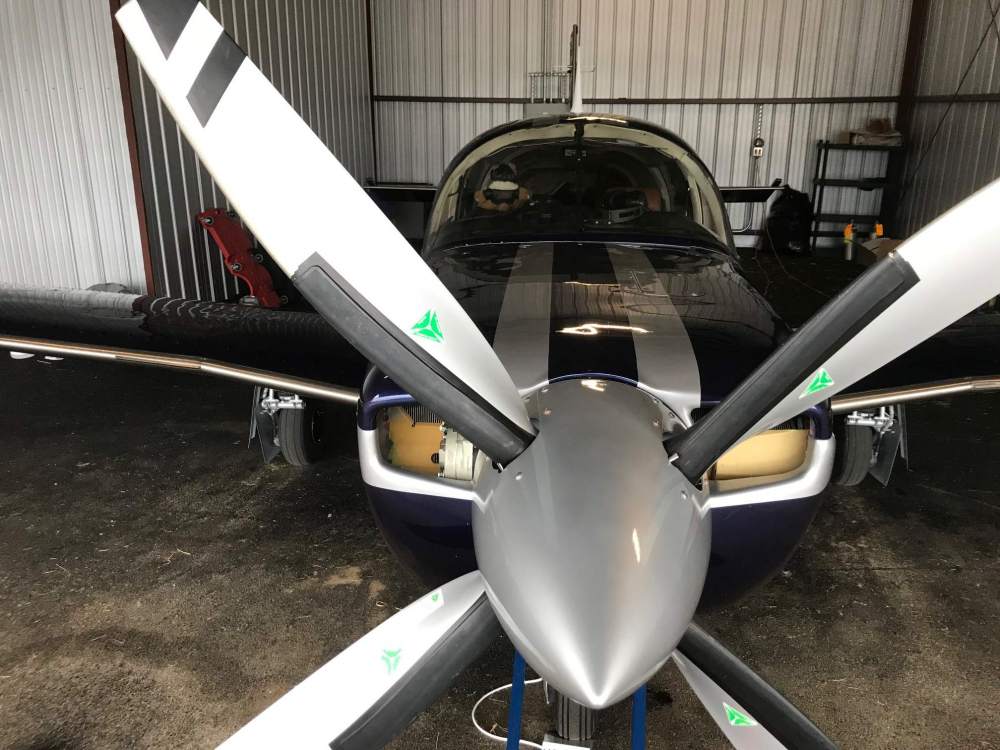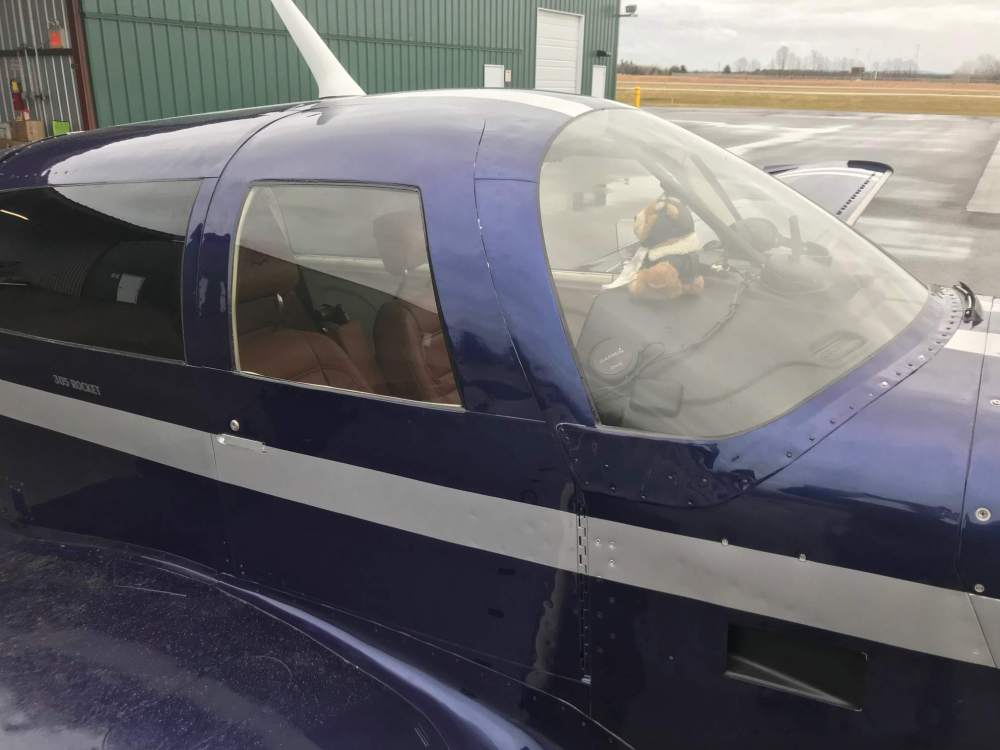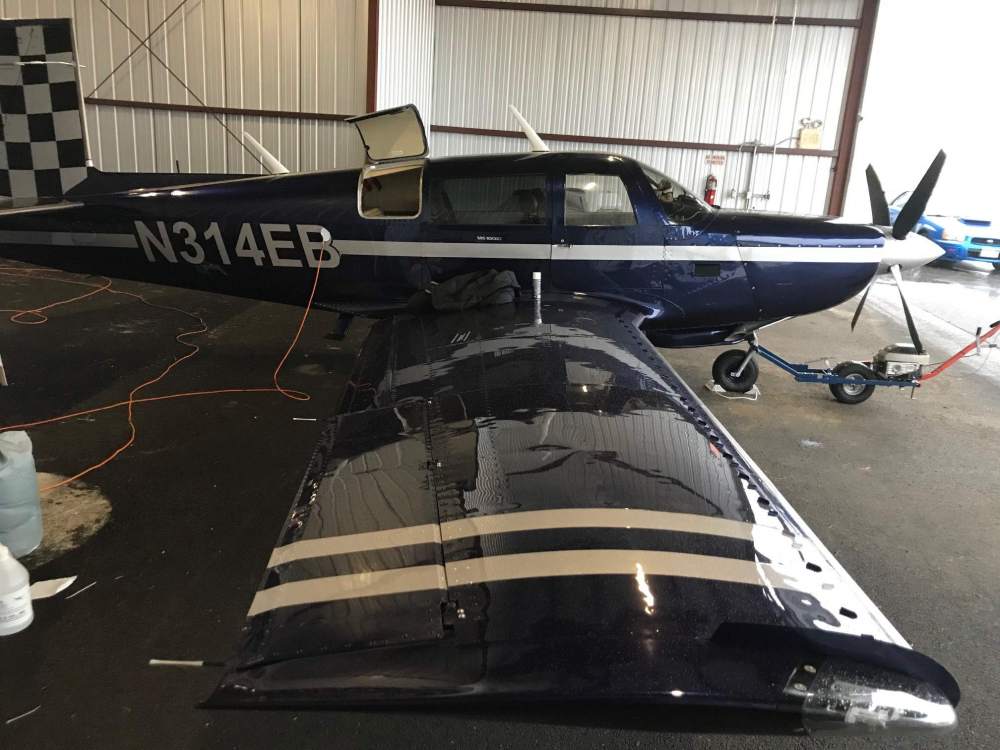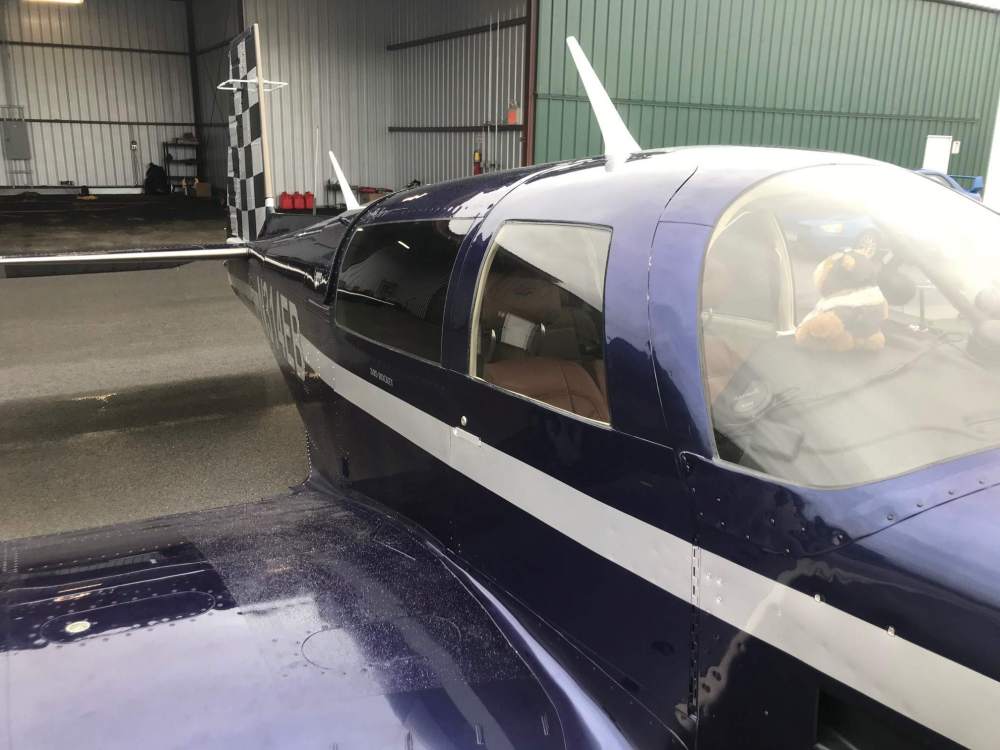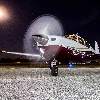Leaderboard
Popular Content
Showing content with the highest reputation on 04/27/2018 in all areas
-
Here goes: Testing is going good finally. Like Marauder said, we made progress on the CHT’s. Right now, 4 airplanes have been modded. Nothing specific yet on the oil cooler relocation. Baffling will be changing to a plenum instead of baffle seals. Matt’s and mine will get a plenum in the next month or so. If it works like I think it will, I’ll mod the other 2 airplanes baffling. We’re thinking of closing the sides of the cowl flaps like on the later Mooney’s. I have a good number of customers who would like it done but are also waiting for the final solution so there’s not any more modifications needed later. We plan to install cheek vents similar to Ray-Jay and LoPresti cowlings on Matt's next to increase the air exit flow. Pricing is in the $5-6 k range including installation and spinner if necessary. Thanks, David5 points
-
At the risk of starting up a VFR vs IFR debate, here goes... I'm not IFR so I can't say how much more relaxing it might be, but VFR with flight following is easier and more relaxing than VFR on your own. I use flight following all the time on cross country trips and enjoy the help ATC provides. They will clear me through the Bravo in Vegas and Phoenix quite often, I don't worry about Charlie or Delta space as they take care of it and hand me off when needed, they warn of traffic conflicts, etc... "Some" of the benefits of IFR, just not all of them.4 points
-
Yes. And there are a couple of good points wrapped up here. First - don't break the bank on the initial CapEx because the OpEx in the first year might be shocking. Second - don't put yourself in a position where you realize the $10K you saved buying the cheaper one, just cost you $30K in unexpected expenses.3 points
-
What did the sellers say when you made an offer on the plane? If you're ready to commit to a particular airplane, pull the trigger. Who cares what a seller says. I had someone throw out a number on my airplane- it was the whole "I don't want to offend you but..." dance. I wasn't offended- I was offered a lot of $. My response was that his price might be good but I've barely started the advertising process and that his number may be right, but after the plane has been on the market for 30 days I would come down on my price. Hell- I don't even have recent stuff put together on my plane yet. Work/family getting in the way... No big deal- I'll be more concerned in about 6 weeks when a new plane comes home. It's very unlikely that you're going to find the perfect fit for what you're looking for. We're all particular people that want different things in an airplane. The goal is to find a plane that's pretty close to what you're looking for to minimize the cost to get it to what you want it to be. If you're not making an offer on an airplane because it's not close enough to your desired specs- no big deal. Committing to an airplane and making an offer is hard. If you want to shop- fantastic- I've been shopping airplanes for years because it's fun. Maybe the perfect plane will come along at some point, you'll offer $2K below asking and get a bargain. It may take 3 years to find the plane, and that's fine if that's what you want to do. If you want to buy a plane in the next 90 days, that's a little more limiting- wait and see what comes on the market, or pull the trigger on what you see. If you start making offers and sellers keep saying no, either all the sellers are unreasonable, or your price expectation is unreasonable. Then you have to figure out if you want to do- increase your budget, wait for sellers to come down in price, or wait for another plane to be listed. Me- I spent a little more than I wanted to on a new plane. Why? I got tired of talking about doing something and decided to do it. I can estimate the total cash outlay on aviation over the next 10 years. The increase in the purchase price is a rounding error. Seller is taking less than he really wanted for the plane. Probably means we're in a reasonable spot.3 points
-
I've noticed a significant change just in the last 10 years for IFR flights. It seems that all ATC facilities have excellent weather information and are quite proactive in keeping us clear of possibly damaging convection. It usually goes something like... "N252AD we show an area of moderate to severe precip 1 o'clock and 20 miles." "If you'd like a deviation, just let us know." At that point I'll either ask for a deviation left or right, 10 or 15 degrees. Or I'll say we're watching it and will advise. Or I'll ask what they suggest and ATC will offer a suggested deviation that will keep us clear. IFR flight can be intimidating at first, but you quickly discover it's easier than going VFR. And will actually make the flight more relaxing.3 points
-
That's not what I'm saying. It appears that it is not a major alteration. So it would require a logbook entry by an A&P. That would be the correct paperwork. Sorry for the confusing statement. I don't see anywhere in the regulations where an owner can preform an alteration, even a minor one.3 points
-
A&P certificate is moot when you're arguing with a PP-ASEL who has stayed at a Holiday Inn Express once or twice3 points
-
As they say, "Once you go turbo..."3 points
-
On April 26th my wife and I were traveling to Nassau for a long weekend in the Bahamas. We planned a stop in Daytona Beach for fuel. When we departed Huntsville, AL there was a low pressure to the west pushing a cold front to the east so we had to pass through about 90 miles of light to moderate rain. When we arrived at Daytona Beach the controler took us several miles off shore to enter a right base for 25R. To make sure we had our best glide in case of an engine problem I left the gear up until we started our descent on final. As we started to descend on final I put the gear switch down and started my gear checks. Switch down, manual gear indicator in the floor in the green and and gear down light on is my normal procedure. When I looked at the floor indicator I remarked to my wife that the light must have burned out as it was hard to see the green indicator but it was there and I could see it. When I looked at the annunicator gear light it was off. At this point I knew something was wrong but I didn't know what. I am still at a couple thousand feet so I had time to cycle the gear up and back down and had the same indications. I checked the manual gear cover to be sure it was latched and I pulled the manual gear handle to confirm the gear was down. It is now time for a different plan as I knew I wasn't landing without a gear light since I didn't trust that the gear was locked down even though I was confident the gear was down. I thought I probably had a stuck or broken gear down switch. I have always felt and I teach my complex students that the worse place to diagnose a problem is in the pattern. Close to the ground is no place to deal with the distractions of a gear problem. My call to tower was "Daytona tower, Mooney 49Q has a gear problem and needs to depart the pattern to troubleshoot the issue". He immediately offered an orbit over the speedway and a climb to 1500 feet which I took. In hindsight, maybe not the best spot since I had to stay away from the runways which was a lot more complicated because the autopilot was randomly disconnecting. Lots of distractions during the entire event including the tower asking fuel and souls on board. The tower was great during the entire event but I did have to ask him to standby once since I was feeling overloaded. Flying, troubleshooting and talking was one too many things to do. Things got really quiet after that. After arriving at the speedway and getting the altitude back where it belonged I started troubleshooting the gear issue. At this point I planned to manually put the gear down since I had tried all the electric troubleshooting I could. When I reached to the circuit breaker panel to pull the electric gear breaker I noticed the gear indicator breaker was popped which explained the lack of lights. I pressed the gear indicator breaker back in and put the gear down which promptly tripped the breaker again. Not good. Next plan is to pull the breaker and manually extend the gear. That worked but I still didn't have a gear light. I reset the gear light breaker and the lights came on. I told the tower that I had a gear down indication and I was ready to land. He sent me on a fairly long downwind since he had two jets to land. I didn't realize until later but the controllers were holding the other planes on the ground to give us the runway. During the downwind leg I heard someone asking about the alert aircraft and realized they were talking about us. That was a bit sobering. When we turned final we had two fire trucks and an ambulance on our left. They had four trucks at various places on the right of the runway. Lots of airplanes holding on the parallel taxiway since Emery Riddle does a lot of training here. Ok, this is for real. I made a nice slow descent and as gentle touchdown as I could. The gear stayed locked down and after I made the right turnoff on the taxiway I felt fairly confident that the gear wasn't going to collopse. We had one of the alert trucks and a fire truck follow us for a while. The alert truck followed us to the ramp and the airport authority guy took our statement. End of the incident but I still have a broken airplane and reservations in Nassau. First step is to call Joey Cole and get some advice. He is at lunch and will have to call me back. Daytona Aircraft Services is on the field and were kind enough to put the plane on jacks to check the gear. We performed several gear cycles and no issues were seen. We pulled the gear indicator and confirmed that the gear would lock down even if the gear down indicators wouldn't light. The guys at Daytona Aircraft Services were confident that there were no issues with the gear and that I just had a problem with the gear indicator system. When I spoke with Joey and told him the problem his first question was did I fly through a lot of rain. I said that I had flown through about 45 minutes of moderate rain that morning. Joey said that water can cause issues with the gear indicators and that was probably what happened. At this point I felt comfortable that the gear would come down even if the indicators failed to work. We fueled and loaded up to depart for Nassau. When we arrived in Nassau the gear extended and the lights lit with no issues. When we get home I plan to pull the wiring diagram and check for anything that could cause the breaker to trip. What I did right: 1) Left the pattern to diagnose the problem 2) Managed the flight and got all the help I needed 3) Didn't do anything to make it worse. I was really tempted to cycle the gear instead of getting it on jacks. How much worse would it have been if I had the gear down, put it up and then it wouldn't come down. 4) Landed at a field that had a Mooney service center on the field. What I did wrong: 1) I should have gotten out the checklist instead of doing everything by memory. I would have caught the popped breaker sooner. 2) I should have cancelled my IFR clearance sooner. I didn't need it and it made the controller's and my job harder. I definitely busted my assigned altitude due to distraction. I didn't declare an emergency but I am sure the tower controller did it for me. It will be interesting to see if I hear anything from the FAA about the event.2 points
-
Hi Bob, Quite similar, but plan to have it removable with camlocs like the cowling. I think too much air is lost through the seals and it makes the cowling more difficult to install. The plenum will not let much air leak out. I need to have something standard on all the airplanes as I can't chase one that has higher CHT's and others that don't. The plenum will be attached to the inlet air rings for a controlled airflow. I suspect Mooney continues to use baffles with seals because thats what their TCDS says they must use. David2 points
-
2 points
-
I don’t think the op was asking about the law, he was more or less asking as long as he was following the law is he going to have any problems with packing his riffles through an fbo. And the easy answer to that is as long as he is following the law and is permitted to have the firearms at that point he shouldn’t have any issues. He was also also asking about riffles and not hand guns in most states they are handled very differently. And he shouldn’t have many issues with a long gun I know when its leagal to carry my fire arm and when its not. How to check it and how to secure it. I have law enforcement back ground and without going in to it I was letting the op know I carry a gun on me most of the time and understand his concerns.2 points
-
I'm certain that David and/or Matt will come along and give the most current update. Matt & I spoke a week or so ago. He was still dealing with CHT heat issues but made a flight with the metal rings removed from around the inlets. On that flight he said he saw a 25 degree reduction in temps. I think he and David were going to map out the next steps. I have been sitting in the queue behind Matt and Bob waiting to find out if Matt's heat issues will get resolved before I had the mod installed. Bob B had the mod done on his plane and is dealing with an oil temp issue which is probably not related to the mod (he had higher oil temps before the mod). His temps for CHTs are more reasonable and we (Matt & I) are perplexed why his IO-360 A1A would be running much cooler with the same mod installed.2 points
-
2 points
-
+1. Matches my experience exactly. (I file IFR on virtually every cross country flight. ATC can be a very helpful copilot.) (I ferried a Mooney to @AGL Aviation yesterday to help out a couple of MSers. My ride to the plane was in a borrowed M20F flown by an ex Navy pilot who almost never talks to ATC. We had to maneuver under and around CLT's Bravo. Not my idea of fun. Dodged quite a bit of traffic displayed on a small screen 430W. I'm spoiled.)2 points
-
I carry a pistol on me all the time but it’s concealed. Last hunting season I flew into two fbo’s and had long riffles with me. They were signature fbo’s. With my other gear and the riffles no one really paid much attention. Depending on the case some people might not have a clue what it is, and those that do hopefully they will have the understanding it’s a nonissue. And the ga fbo’s that I’ve been to there are not a lot of people let alone a fence so I think you’ll be fine.2 points
-
2 points
-
and, before we blame them for being out of fuel, the female crew member reported that the right fuel pump had failed. Let's wait and see what the TSB finds before drawing conclusions2 points
-
Ah. So I now see. Po’ ol’ deah—Bless its heart. My toddlers loved the book, and we had to read “K-Mooney” every blessed night for a couple of years. 70B is, at least for now, called The Beast.2 points
-
Fine (1oz) fiberglass cloth and black RTV does a fine job of patching the holes. Take it off, clean it with solvent than scrub it with a tooth brush and laundry soap and water. Let it dry thourouly. Smear on a thin coat of black RTV then stick a small patch of cloth over the hole and push it down into the RTV without pushing it through the hole so it lays flat. Let it cure and then put another layer of RTV to compleatly cover the cloth. Do this to both the inside and outside. Try to keep it thin so it doesn't stiffen up the coupler.2 points
-
This argument resonates with me. If I were a buyer and someone offered/presented me with a multi-year list of oil analysis reports I'd take that as (one small piece of) evidence that the owner took care of that plane. So if I were on the fence on which aircraft to buy that might tip the scales.2 points
-
You might be comfortable with your instructor, but if you are in San Diego, get with Paul Kortopates, Mooney owner for years, A & P, instructor. You will get Mooney insight that a generic instructor doesn't have.2 points
-
Mooney Caravan: 2018 Flying Monkeys Formation Clinic 4-6 May 2018 Join us for a weekend of fun, flying, and fellowship in the Air Capital of the World! The primary goal of the formation practice session is to introduce the basic 2-ship formation procedures required for participation in the Mooney Caravan to Oshkosh 2018 formation mass arrival to AirVenture Oshkosh. For those pilots proficient in basic 2-ship formation they will have the opportunity to both refine their fundamentals and work on 4-ship procedures. Experienced formation pilots will be paired with new pilots to serve as safety pilots. Location: Newton City/County Municipal Airport, Newton, KS http://www.airnav.com/airport/KEWK Dates: May 4-6, 2018 Host: Dave Marten (Mooney Caravan) davemarten77@gmail.com (605) 390-8044 FBO: Metro North Flight Support (Main Terminal) Arrival parking is on the main ramp located immediately in front of the terminal. Ground School: Formation Academics will be held FRIDAY evening at 7:30 pm at the Comfort Inn and Suites (host hotel) Initial Formation Academics: Introduction and review of fundamental 2- ship procedures focusing on training requirements for the Caravan mass arrivals. Mandatory for those who have not previously attended a Money Caravan clinic. Download and review the Mooney Caravan Formation Guide http://www.mooneycaravan.com/training **Friday evening Ground School will maximize flying on Saturday. Hotel: Comfort Inn & Suites at a discount rate Call for reservations: (316) 804-4866 Breakfast is included 6-9am. Schedule: Friday 4 May: - 1600-1800: Arrival Social in airport terminal - 1600 thru 1800: Shuttle to host hotel - 1930: Newbies: Initial Formation Academics. Saturday 5 May: - 0730: Meet at hotel lobby for shuttle to airport - 0800: Mass brief – flight assignments (Mandatory for ALL pilots) - 0830-1030: Sortie 1 (brief, fly 45min, debrief) - 1030-1200: Sortie 2 - 1200-1330: Lunch at Airport - 1400-1530: Sortie 3 - 1600-1730: Sortie 4 ***Group Dinner/Social 1830 Sunday 6 May: - 0730: Meet at hotel lobby for shuttle to airport - 0800: Mass brief - 0830-1200: AM window fly for those interested Mooney Caravan: www.mooneycaravan.com Registration: David Marten davemarten77@gmail.com A nominal clinic fee will cover snacks/beverages, printing, and admin costs1 point
-
Since this site is about sharing knowledge I just got a "T" shirt in Flap Troubleshooting. About 2 months ago my flaps would not retract from landing position. I removed the belly pan and did all the normal stuff as in making sure the switches were tight and the contacts were actually depressing. This along with Electronic Cleaner and magically they started working again. until last Saturday.... Same situation. They would not retract from the Landing Position. We dropped the belly cover again this time with the plane on jacks and a comfortable creeper. I wanted to painstakingly go through every switch. I checked each switch for continuity and alignment, all good. Still the flaps would not retract. So what creates an intermittent problem.... Hmmm a relay! Yes... there are two permissive relays on a circuit board. With the flaps still stuck in the down position I taped on the relays with a screwdriver and up the flaps went! I could not find the exact brand but I was able to cross match it to a potter-brumfield part which I use a lot for control panels. There are six solder locations per relay and dropping the board is a PITA. But..... knowing the flaps will retract at a destination away from hope was worth every minute to get it corrected. Rick1 point
-
1 point
-
1 point
-
Yep, make sure you check the laws before going, and even if you have been there before check them every time as they often change... Even here in the People's Republic you shouldn't have a problem as long as everything is locked up like it is supposed to be. I know the OP isn't talking about commercial travel, but I've flown commercial out of John Wayne (SNA) before with my handgun without issues. It has to be in a locked case, you tell the ticket counter you have a firearm to declare, they give you a form to fill out, and it goes in the checked luggage. If you are flying your own plane that makes it easier and shouldn't have any issues walking through an FBO and out onto the ramp with a gun case.1 point
-
It might be where I live...I often see people carrying soft-sided shotgun cases at airports, (during hunting season, at least), including ones with limited ramp access. They are often wearing hunter orange, too. I have never seen anyone care, other than to ask what they are hunting.1 point
-
I was at an Avidyne training class three weeks ago. I was sitting next to the director of marketing for Avidyne. He was there for the big avionics show in Vegas. I asked him about using a G5 with the Avidyne and the FAA. He said they were being done all over the place and the FAA didn't have a problem with it.1 point
-
Bump. How is testing going? How many mods completed? Any step by directions to prepare for an install (specific oil cooler relocation kit for allowing required space etc.). Bugs yet to be worked out on baffles? Bugs on cowl flaps? Updates on pricing you install now that some have been done and lessons learned applied? How many in que for install?1 point
-
1 point
-
I buy the prepaid Aviation Oil Analysis (AOA) kits from Aircraft Spruce. (They also sell ones from Lab One. I just got used to AOA since they already had a trend on the airplane I bought.) They cost me $11.40 each and they e-mail the results usually a day or two after they receive it. I like looking at the trends. If you change oil every 25 hours, let's say with postage it costs you $15 per time, that means $60 every 100 hours or $600 every 1000 hours. I think it's worth it. People buy when they are comfortable with the Seller and the product. If someone is looking for an airplane that has good maintenance records and a meticulous owner it may help to sway them toward your airplane. But the real value is if it catches something in a trend that you wouldn't find otherwise.1 point
-
1 point
-
The original bulbs were not led. You’re changing the bulb the type certificate holder used. If you want to use a different bulb you at least need an a&p to sign it off as a minor mod -Robert1 point
-
1 point
-
Ditto. Agree with this and others’ remarks. Price it accordingly with a near run-out engine, and it will certainly sell quickly. Agree with Niko, though, that you may want to reconsider a turbo. I have absolutely nothing against them, and have considered an Acclaim more than a couple of times, but keep coming back to the rock-solid abilities and peace-of-mind my Ovation gives me...especially after I’ve configured it exactly as I want, as you appear to have done. You’ve got some excellent equipment in that ship, and you wrote it all up nicely. I’m convinced it will sell quickly, should you decide to list it. Best of luck in your decision. Steve1 point
-
In your case isnt it, "once you go turbine"?1 point
-
I'd recommend selling as is, just price for hours on engine accordingly. Vref gives you the data for this on an hourly basis. Base price always assumes mid-time engine, so a run out engine would amount to a discount of half the cost of a fresh OH engine. You'll have to look at Vref (free on AOPA) or the Blue Book schedule to see what they are allocating for engine time but I'd expect it still falls a bit short of 100% of all the overhaul expenses you'd pay. Plus your panel will help motivate a lot of buyers. Owning and flying a turbo, I totally get why you want to go that route. I can't count the number of times I would have canceled or delayed if I didn't have the turbo to climb up on top and cross the weather from above it.1 point
-
I'm in agreement with what others are saying. What would you ask for the plane if it had a fresh engine? I've never been in the market for an Ovation and so don't know how to price it myself. But I think if you worked out a fair price for an Ovation with a fresh engine and then subtracted the cost of the overhaul from that number and listed it, it would sell quickly. I'd much rather buy your plane with a timed out engine at the right price and then get it done myself.1 point
-
1 point
-
1 point
-
Well its been 8 months since I last posted on the gauges and have been meaning to finish up the post for those interested in doing the same. As mentioned earlier Mitchell’s 2x3 cluster fits in place of the Garwin cluster very well with very little trouble. Once the cluster was mounted I moved on to the cluster wiring, the original cannon plug was removed from the aircraft wiring. Some of the original wiring was reused and some was replaced and or added, both the LH & RH wires were replaced to the sending units do to the fact they had been butt-spliced behind the side panels for some reason, not sure why but it looked like crap so I just pulled new wires. The wiring was straightforward, since the new gauges are lit the lighting was daisy chained and ran to their own circuit breaker. The lighting was check on night to see how bright they were, they were fairly dim so I didn’t bother running them through the overhead rheostat. RH & LH fuel gauges, Oil PSI and Oil Temp were wired to the existing 12v and grounds were run to a ground lug. Next was the fuel sending units, which were bolt on and connect the new wires previously installed. The new Shunt was installed in the original place. Next was the new CHT probe, there again an easy install. The 2 probes remaining are for the Oil Temp & PSI, the original PSI gauge was a wet gauge (oil line to the back of Garwin cluster), a new wire was pulled for the Oil PSI sending unit which is mounted under the cowl. Last was the new Oil Temp sending unit, the old unit had 2 wire were the new only uses one. The wiring took several days, the middle of August in S. Texas is a little tough on a slightly over weight, out of shape 57 year old . Let me back up a bit, the new fuel sending unit float arms were bent to an approximation prior to installation, I also had removed the LH & RH top inboard inspection panels so that I could tweak the float arms if needed. Since we were doing an annual at the same time the plane was already on the jacks so it was leveled per the manual. Reaching in through the top inspection holes the floats were rotated through their entire movement to verify E (empty) and F (full), after minor tweaking they correctly read at each end of the range. The inspection panels were re-sealed and installed and allowed to dry for 5 days (72 hrs was cure time). Now came the moment of truth how accurate were they going to be between Empty & Full, 2 gallons was added to each side then pumped out with the electric boost pump, leaving just the non-usable amount in the tanks. Both read empty when the master was turned on, as they should, I added 1 qt of fuel per side as my IA sat in the plane and verified a slight needle movement as the fuel was added, the next step was to add fuel and note the gallons needed to reach ¼, ½, ¾ and full, I’m happy to report that each quarter mark was with in a half gallon max of where it sound have been, Ill also note that I might have been able to maybe a gallon more on each side. The math was based on 26gal. per the POH and the 1 gallon pumped out initially. After the annual it was run on the ground to check for any oil leaks from the new sending units, all was good so it was time to test fly and all went well. The fuel gauges are very stable in flight and no longer look like windshield wipers, it wasn’t a tough install and can be easily done if it isn’t in August in Texas Sorry it took so long to add an ending to this thread1 point
-
1 point
-
At work I always have a 5 pt system and feel naked without. Looking at the proposed attachment member, I don't see how an attachment can be made without causing exterior bumps in the skin above the structural beam.... However, if it can be done, I will be interested in doing the installation.1 point
-
I think the Complex requirement originally came about because all the more capable aircraft were retractables. In today's world there are plenty of very capable aircraft that have the gear welded down. Moreover, the commercial should be about how well you fly an aircraft, not whether you can remember to put the gear down. Sounds like a fairly intelligent move. I'll bet the real driver is the dearth of complex aircraft available to rent.1 point
-
I tried to make a science out of figuring out the proper route to file. What I learned is that there are a lot of factors that come into play which dictate the route you will get (Letters of Agreement between facilities, hour of day, weather, ATC delays and who knows what else). Even on flights I filed before I learned that I may not get them a second time. I remember a couple of years ago I filed to a destination in western NY. The clearance I received was the typical go to MXE, then Victor airways northwest towards my destination. A couple of weeks later I filed the same route that I received earlier and was given a route that took me to MXE, then northeast before turning me northwest. When I was airborne I called Philly up and they asked me why I was flying northeast and if I was on an IFR training flight! I said “no” and then received a direct clearance to a VOR about halfway to my destination. A buddy of mine typically will file a direct route picking a couple of VORs or waypoints along the route. His rationale can’t be argued with. “What difference does it make, they will give me what they want and then at some point change it again”.1 point
-
You're doing great. I've got 18 years of Mooney ownership and about 1,000 Mooney hours- and my last landing was crap. 95W is still glaring at me in spite.1 point
-
Yes, but it is well worth it! Sent from my LG-US996 using Tapatalk1 point
-
Putting that GE halogen back in is sacrilege! He needs LED to keep the modernized look up1 point



